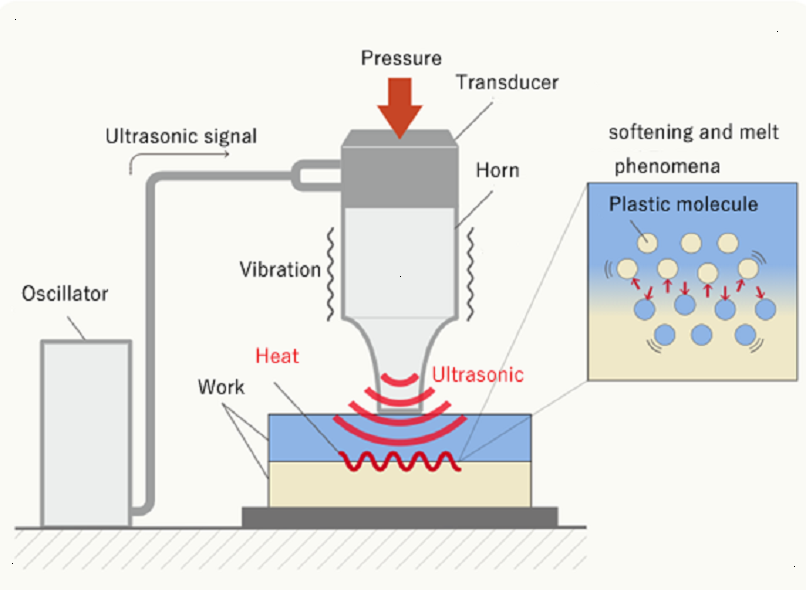Introduction to Ultrasonic Welding

Welding has been an essential process in manufacturing for centuries. It involves fusing materials together to create a strong, permanent bond. Ultrasonic welding is a modern technique that has gained attention due to its precision and efficiency. In this guide, we will explore ultrasonic welding, including its principles, advantages, and potential drawbacks.
What is Ultrasonic Welding?
Ultrasonic welding is a process that uses high-frequency ultrasonic vibrations to join two materials together. Unlike traditional welding methods that rely on melting the materials, ultrasonic welding generates localized heat at the interface between the two materials. This heat softens the materials, allowing them to fuse together without reaching their melting points.
How Does Ultrasonic Welding Work?
The key components of an ultrasonic welding system include:
- Transducer: Converts electrical energy into mechanical vibrations.
- Booster: Amplifies the amplitude of the vibrations.
- Horn (also called Sonotrode): Transmits the mechanical vibrations to the materials being welded.
- Anvil: Provides support for the components being welded and helps define the shape of the joint.
The ultrasonic welding process involves:
- Clamping: Securely clamping the two materials to be joined together.
- Vibration Application: Generating high-frequency vibrations transmitted through the booster and the horn to the materials at the joint interface.
- Heat Generation: Creating friction at the joint interface that generates heat, softening the materials, and allowing them to fuse together.
- Weld Formation: Pressing the materials together with a predetermined force, causing them to bond and form a solid, strong weld.
- Cooling: Rapidly cooling the weld, solidifying the bond.
- Unclamping: Releasing the clamping force and removing the newly welded assembly.
Materials Suitable for Ultrasonic Welding
Ultrasonic welding is ideal for joining thermoplastics such as polyethylene, polypropylene, polyvinyl chloride (PVC), acrylonitrile-butadiene-styrene (ABS), polycarbonate, and nylon. The compatibility of materials is crucial in ultrasonic welding, as both materials must be thermoplastics or have a thermoplastic component for a successful weld.
Applications of Ultrasonic Welding
Ultrasonic welding finds applications in various industries such as:
- Automotive Industry: Joining components like interior trim panels, dashboard assemblies, door panels, and under-the-hood components.
- Electronics Industry: Assembling components like printed circuit boards, wire harnesses, and sensor housings.
- Medical Devices: Assembling various medical devices, including syringes, catheters, and filter housings.
- Packaging Industry: Sealing and cutting packaging materials such as blister packs and clamshell containers.
- Textile Industry: Cutting and sealing fabrics, attaching zippers, and buttons to garments.
- Aerospace Industry: Assembling composite materials used in aircraft components.
- Toy Manufacturing: Assembling plastic parts securely.
- Renewable Energy: Connecting solar cells in the production of solar panels.
Advantages of Ultrasonic Welding
Ultrasonic welding offers several advantages over traditional welding methods:
- Speed and Efficiency: It is a high-speed process that takes only a fraction of a second to complete a weld, increasing productivity in manufacturing.
- Precision: It allows for fine control over welding parameters, ensuring consistent and accurate welds.
- Cleanliness: It eliminates the risk of contamination in industries like medical device manufacturing.
- Strength: It creates strong and durable welds that are often as strong as or stronger than the base materials themselves.
- Energy Efficiency: It is relatively energy-efficient compared to some traditional welding methods, leading to cost savings and reduced environmental impact.
- No Consumables: It does not require consumable materials, reducing ongoing costs.
- Versatility: It is adaptable to various manufacturing needs.
Potential Drawbacks and Limitations
While ultrasonic welding offers many advantages, it also has some limitations and potential drawbacks:
- Material Compatibility: It can only be used with certain materials, primarily thermoplastics and some non-ferrous metals.
- Thickness Limitations: It is best suited for joining thin to medium-thickness materials.
- Joint Design: Complex joint geometries can be challenging to weld effectively.
- Equipment Cost: It can be expensive, which may pose a barrier to entry for some manufacturers.
- Amplitude and Frequency Adjustments: Optimizing the amplitude and frequency of the ultrasonic vibrations for a specific application can be a complex process that requires expertise.
- Operator Training: Skilled operators are required to set up and run ultrasonic welding equipment effectively.
Ultrasonic welding is a fascinating welding technique that has revolutionized the manufacturing industry. Its ability to create strong, precise, and clean welds in a wide range of materials has made it a preferred choice in various industries. While it has its limitations and challenges, the advantages it offers in terms of speed, efficiency, and reliability make it an invaluable tool in modern manufacturing.
As technology continues to advance, it's likely that ultrasonic welding will find even more applications and innovations in the years to come. Its contribution to improving product quality, reducing costs, and increasing manufacturing efficiency cannot be overstated, making it a key player in the world of welding and fabrication.





